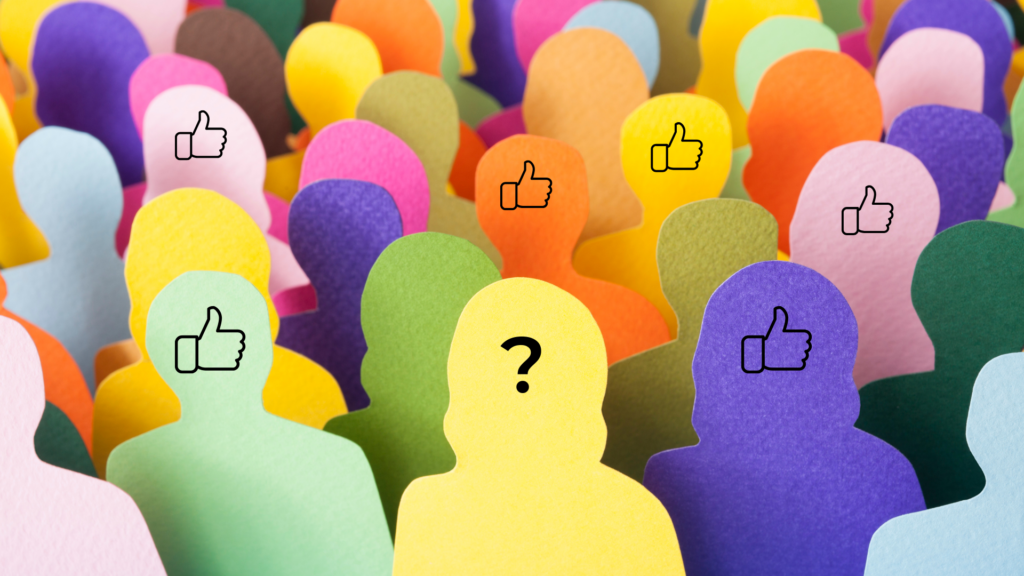It's Not You, It's Your Algorithm
If you’ve ever doubted your creative work because it didn’t immediately catch fire, this post is for you.
Social proof is a concept popularized by one of my research heroes, Dr. Robert Cialdini. In his seminal book, Influence, he names it as one of six powerful “Weapons of Influence.” Social proof is why restaurants with lines out the door seem more appealing than empty ones. It’s why you might instinctively trust a book labeled “#1 Bestseller,” even if you’ve never heard of it. And it turns out, it’s why some very good content goes endlessly viral, whereas other content, though equally good, is destined to languish in obscurity.
A number of years ago, one of my research assistants and I ran a series of studies about social media virality using the ultimate modern laboratory: X (Twitter, at the time). Specifically, we wanted to understand how social proof shapes people’s perceptions of the content there.
Funny is Funny, Unless No One is Laughing
Across two studies, we created posts on X in two categories: advice and humor. For each one, we made two distinct versions using HTML editing tools.
- The Social Proof Condition: These posts appeared to have thousands of likes, re-tweets, and shares.
- The No-Proof Condition: These posts were identical in content, but they showed only a handful of likes and shares.


As you can see, the posts didn’t change, only the numbers. Participants were randomly assigned to view posts from only one condition, either posts with social proof or posts without. We then asked them to evaluate the content: Was the advice helpful? Were the jokes funny?
The results were astonishing! In the social proof condition, participants overwhelmingly rated the advice as insightful and the jokes as hilarious. In the no-proof condition, the very same advice and jokes were largely dismissed as mediocre or unremarkable!
Why? The power of social proof.
Why Social Proof Matters
These findings highlight a truth that’s both empowering and frustrating for creators: the quality of your work doesn’t always speak for itself.
In a noisy world where everyone is competing for attention, people often use shortcuts to decide what’s worth engaging with. The social proof displayed in popular engagement metrics functions as a mental shortcut. It tells people, This is popular, so it must be good.
The flip side? If your content doesn’t immediately attract attention, it might be unfairly overlooked—not because it isn’t valuable, but because people don’t have the bandwidth to critically evaluate everything they encounter.
Believing in Your Work
So, what’s the takeaway?
First, if you’re a creator, don’t let a lack of immediate traction discourage you. Your advice, insights, or humor could be just as good—if not better—than what’s trending. What you need isn’t a radical overhaul of your work but a strategy to get more eyes on it.
Second, remember that social proof is a double-edged sword. Popularity doesn’t always equal quality. People follow the crowd for all kinds of reasons, many of which have nothing to do with merit. (Go to the mall on Black Friday and then tell me how you feel about the wisdom of following a crowd.)
And third, if you’re a content consumer, be mindful of how social proof might influence you. Take a moment to evaluate whether something is truly valuable—or if you’re simply following the herd.
The Long Game
Social proof is a reality of the digital age, but it’s not the only factor that determines success. If you believe in your work, keep going. Sometimes, the crowd needs a little more time to catch up.
And if you’re someone who supports creators, remember this: your like, share, or comment isn’t just a virtual pat on the back. It’s a signal to others that their work is worth seeing.
What’s something you’ve created that you wish had gotten more recognition? Or, on the flip side, what’s something you found popular but overrated? I’d love to hear your thoughts in the comments.
